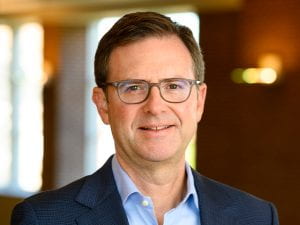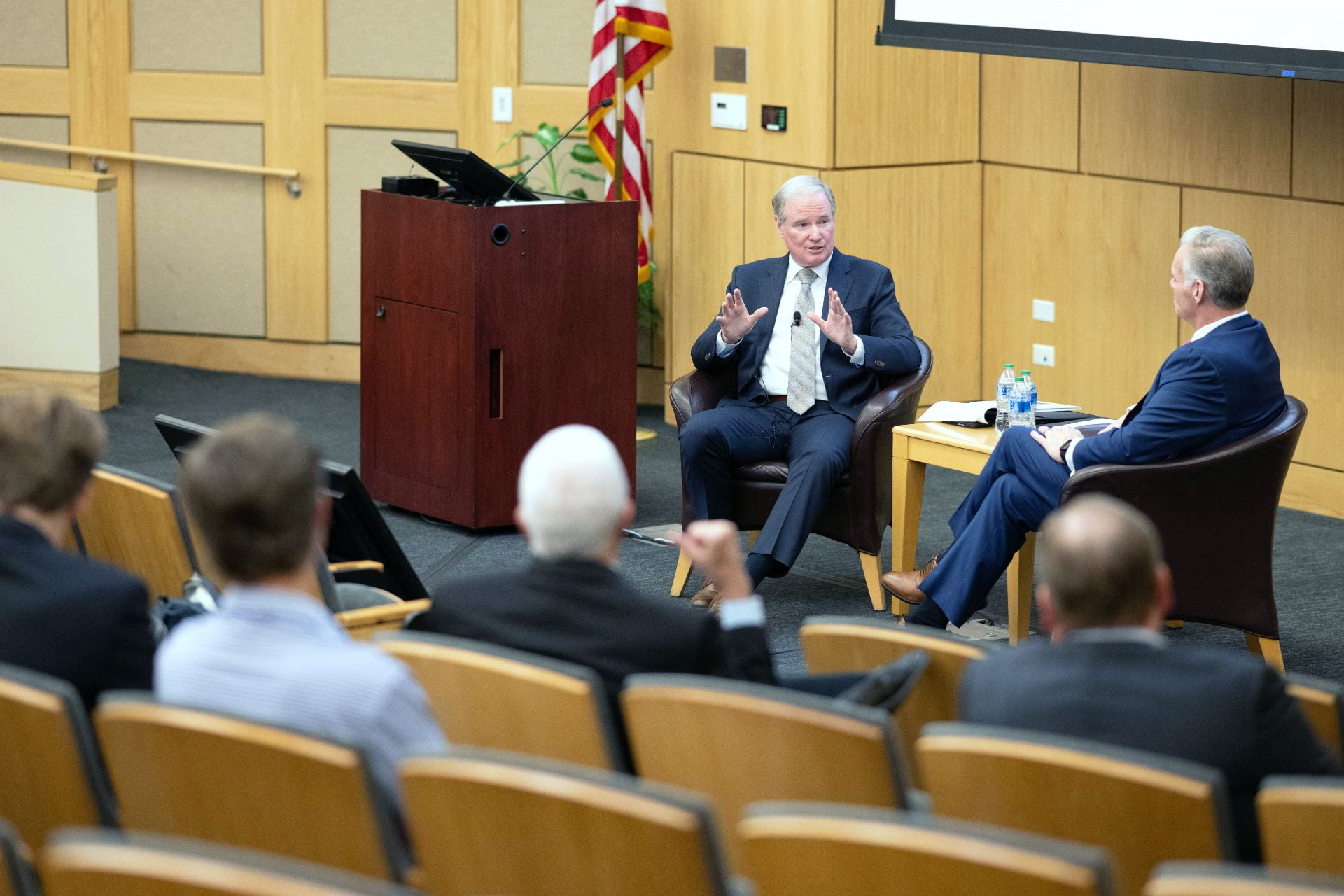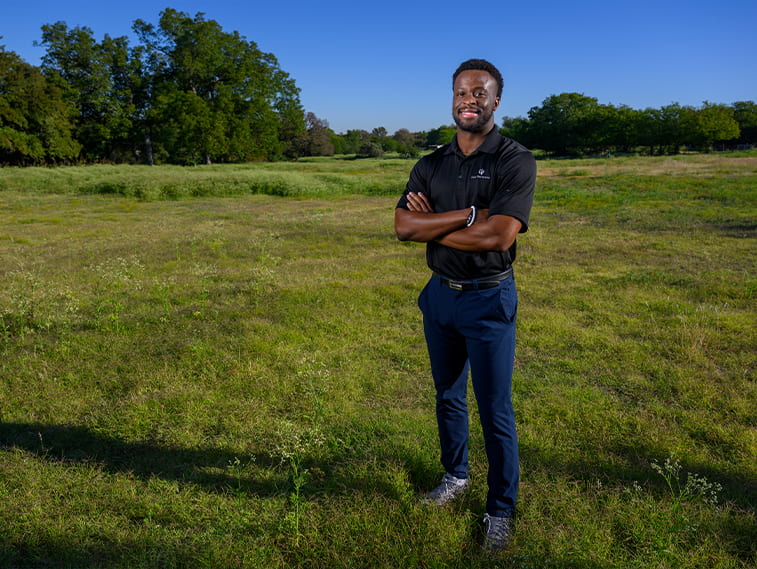For a business school to create a student-led real estate investment fund is not in itself a new idea. But educators at the SMU Cox School of Business have decided to take the concept a step further.
The SMU Cox Real Estate Impact Investment Fund, currently under development within the Cox School’s Folsom Institute for Real Estate, has an ambitious three-pronged mission: to support scholarships for real estate students; show greater social benefit for the communities in Dallas where the fund invests; and give graduate and undergraduate students an intensive experience in researching, underwriting and presenting opportunities to an investment committee that will oversee their work.
The fund will immerse students in Dallas’ explosive real estate market — where the school already has developed enduring connections — and support a stronger city. With Dallas-Fort Worth now the fourth-largest metro area in America and projected to be among the fastest-growing urban centers on the continent in the coming decade, the effects of SMU’s real estate programs are poised to reverberate well into the future.

“One of the advantages SMU has is that the lab we have at our doorstep here is unequaled,” says Bill Vanderstraaten, Folsom Institute Advisory Board chair and founder and president of Chief Partners, a family office real estate investment firm. “Real estate is a physical business — whether you’re looking for tenants to fill space or showing real estate to potential buyers and lenders. So it’s nice to have Dallas at our doorstep. We are sitting in the heart of one of the most dynamic real estate markets in the country.”
Students apply and interview to join the fund’s management team via a 20-student yearlong course catering to both MBA and BBA students. Folsom Institute Director Joseph Cahoon pairs them up — 10 MBAs with 10 BBAs — to collaborate in teams of associates and analysts. Along with Maria Stamolis, a member of the investment committee and co-head of real estate for the global investment firm Canyon Partners, Cahoon co-teaches the much-sought-after class.
The curriculum is still developing, with the class in just its second cohort this fall. Students have essentially built it from the ground up; the first cohort researched the creation of a fund, established what it might invest in, and helped develop the fundraising materials to raise the fund’s capital, which has now nearly reached 30% of its $10 million goal, Vanderstraaten says. Now, with millions available in the fund, students are determining where the fund should focus its efforts and how the potential investments can generate the greatest social benefit and financial returns to create an evergreen structure for the fund.

Some of these answers will come from investigating the social impacts existing projects have had. Cahoon has currently tasked students with developing case studies of existing apartment complexes, strip malls and other developments. By working directly with the property’s owners and investors, students will learn both what the owners hoped to accomplish, what the impacts have been and where they haven’t succeeded. As they lay the intellectual groundwork for the fund’s future investments through their research, they’ll also be looking for opportunities to invest in.
“I need students who are not just going to be students but owners,” Cahoon says. “I told this to my students last night: ‘You have to own this class. If you’re expecting to sit back and receive information, this is the wrong class for you. But if you’re taking an ownership mentality, if you’re curious and dedicated and you buy into the vision — that’s really what we’re looking for.’”
Students will also have to prove their mettle by presenting their recommendations to an investment committee of seasoned real estate and economic development professionals. Alongside Vanderstraaten and Stamolis, the committee includes Cullum Clark, director of the George W. Bush Institute-SMU Economic Growth Initiative and an adjunct economics professor, and Chris Kleinert, co-CEO of Hunt Consolidated, a sprawling private company with specialties in energy and real estate. The committee’s rigor is meant to ensure that the fund invests in the strongest possible projects.
“We’ve taken a very institutional approach,” Cahoon says. “Our investment committee is very much in the weeds and protective of donor dollars to make sure that we are investing wisely to minimize risk and achieve the strongest returns. This is not a bunch of students who are out freewheeling. I wrote our fund guidelines in the same legal manner that any private equity firm would.”
The responsibility to create returns on the investment is complex enough. What separates this class from similar ventures is an imperative for the students to also demonstrate the social benefits of their proposed investments.
“To our knowledge, this is the only student-led investment fund to focus on economically disadvantaged areas,” Vanderstraaten says. “We want to put students’ bright brains to work at helping to solve problems in the community. We found that this age group, in particular, really latches onto that and likes to spend their time in meaningful ways. Their eyes light up when they get to apply their skills toward helping other people. It’s a gratifying feeling to know that the end product of this fund will positively impact other people for generations.”
In a purely dollars-and-cents framework, that means they’ll almost certainly be generating more modest gains than would be possible if their only metric was financial. Yet that wouldn’t be preparing students for careers in which they will have to think across more variables than simply a rate of return.
Increasingly, companies are considering their commitment towards enhancing environmental, social and governance (ESG) policies in their investments and hiring accordingly. Students unable to scrutinize a proposal along those criteria won’t be ready for a global marketplace. Some 90% of companies in the S&P 500 publish some sort of ESG report, a recent McKinsey and Company analysis found, adding that inflows to “sustainable” investment funds rose from $5 billion in 2018 to $120 billion in just the first half of 2022 alone.
For guidelines on weighing potential social and environmental outcomes, students will look to the Global Impact Investment Network’s IRIS+ metrics, which are among the world standards in this area. Ultimately, the class may make an investment in a project for which impact measurements don’t yet exist. This might present a chance to enlist researchers from another department or school across the campus. One investment the class considered was a possible apartment renovation near an elementary school in a lower-income neighborhood. They wondered: Would it be possible to measure differences in educational outcomes for those who lived in improved, stable housing?
Companies and professionals who can demonstrate a social value beyond merely creating profit will outlast and outperform their counterparts. In the past two years, a pandemic and its fallout played havoc with the prices of homes, office buildings, loans, cars and food. Businesses that could read the politics and economics of Zoom schooling, mask mandates, work-from-home years and stimulus payments would have tremendous advantage over those that made real estate investments expecting a fixed rate of return ad infinitum — after all, the very ways in which people used space changed, fast. In particular, any real estate professionals who made early bets on Dallas becoming a favorite destination for job growth and corporate relocation would’ve emerged in a strong position despite a hectic couple of years. Risk happens in the real world, and the real world is messy. It’s in this messy world that real estate, in Cahoon’s view, proves its value.
“Frankly, I don’t feel like the real estate industry has done a good job promoting itself in terms of what it does to support the environment and society,” Cahoon says. He rattles off a litany of examples: attainable housing, strategically placed retail and projects that serve schools, public transit and health care.
Vanderstraaten believes a program that considers the wider effects of real estate will better equip students to provide service and value to their communities, whether they continue to live in Dallas — as about half of the program’s graduates do — or head to other parts of the country and the world. That perspective need not replace the fundamentals of earning a return on investment. Rather, it’s meant to add to the kit they bring to finding deals and projects that bring the greatest benefit to the greatest number of stakeholders.
“We feel this program will make them better real estate professionals and even better citizens,” Vanderstraaten says.
Nudging students to consider and measure the wider effects of their investments is only part of the goal. The fund must also successfully support scholarships to get those students in the door and create opportunities for a diverse array of students who can bring broader perspectives to the school.

Consider a nontraditional undergraduate such as Sharon Garcia Mezo, a current international studies major due to graduate in May of 2023 who arrived at SMU after six years’ service in the U.S. Air Force intending to prepare for a career as a diplomat. Instead, she joined the Undergraduate Real Estate Club, which is supported by the Folsom Institute — in part, she says, because she needed a professional headshot — and got hooked on the culture there. “The hands-on learning — company visits, info sessions and career treks — gave me an insight into real estate that I wouldn’t have had otherwise,” she says. She has used her Folsom Scholarship to begin taking prep courses toward her real estate license and software accreditation.

Jenkins Bender, MBA ’21, a senior development analyst at the commercial real estate firm Stream Realty Partners, put her Folsom Scholarship toward a financial modeling course, a real estate license, software and joining professional networks. “The Folsom Institute boiled down a seemingly large and complex industry into a tight-knit, interconnected group of professionals,” she says. “They facilitated frequent networking events that gave real-world context to each facet of the industry and made it approachable.”
The hands-on approach is going to be key to the success of the impact fund. Once the fund is fully operational, Vanderstraaten says, it’s expected to generate annual returns of perhaps 8% to 10%. Returns will be dispersed evenly between endowing the fund and scholarships.
In Vanderstraaten’s overtures to potential donors, he recalls his own days as an SMU undergrad who got hooked on real estate during an internship after his junior year. One thing that always captured his attention was its tangibility. “This sounds a little corny, maybe,” he says. “But the sheer physical part of creating buildings — these things that we create, as a part of real estate, are going to be around way after we’re gone. It’s a gratifying feeling to know that what you’re doing is going to impact other people for generations.”
That sense of giving back not with a checkbook but with hard work in the moment is what drives Cahoon’s vision of the class. He aims to equip students to participate in the world by putting money behind their strongest ideas as soon as they can make the case that they’re ready.
“The fact is, you can be fresh out of college — you can be in college — and have a significant impact on how our cities work,” Cahoon says. “I want to expose students to social issues, get them passionate about it, so when they get out of school, they’re not cocktail philanthropists. They’re actually acting as conscious capitalists.”









